Close Things / ĽUBA BELOHRADSKÁ
Two stories in one cup
For this occasion, Ľuba Belohradská chose a porcelain cup, with which two stories are connected. The first is her long, precious relationship with a close friend, whom the object will always remind her of. The second storyline is the figure of the Russian avant-garde artist and theorist Kazimir Malevich, his artistic vision and the turbulent times in which he worked. And against the very backdrop of this close subject matter is Ms. Belohradská’s very specific take on the phenomenon of collecting, collectors and the human desire to surround oneself with things.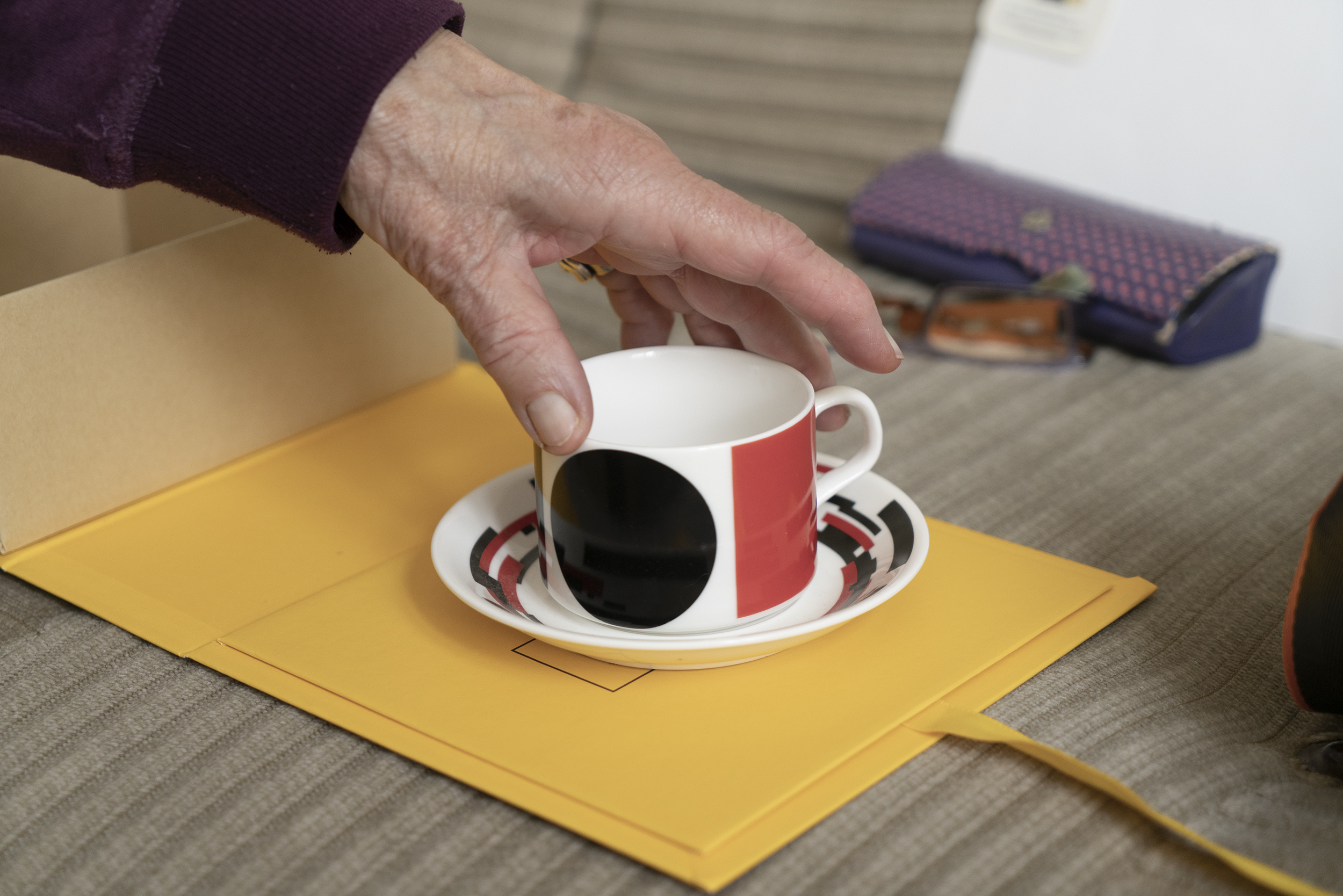 Do you consider yourself a collector? What is your relationship to collecting?
Do you consider yourself a collector? What is your relationship to collecting?
Life forced me to define this problem of collecting quite a long time ago. I had the opportunity to observe collectors and their behaviour at the beginning of my professional career, when I started as an art historian. It seemed to me at the time that collecting was, on the one hand – looking at it from a longer distance in time – a very meritorious activity in principle. When one “sacrifices” and becomes a collector, one creates a kind of special world of traces, in some particular area that one has chosen as one’s collecting sphere. This is the more objective side of things. However, as I have followed the persons of individual collectors over time, I have come to realize that the collector often becomes a kind of “slave” to his hobby. And this “slavery” into which one falls by collecting can sometimes be very dangerous. Because it can push him into situations where, just to satisfy his collecting urge, he reaches into such positions or chooses such solutions that he then, willy-nilly, crosses the line of legal behaviour. That is what started to bother me a lot about it.
I like interesting artifacts myself, and I wouldn’t be able to define in advance what I’m not interested in. Because every thing, when we start to think about it more deeply, has somehow a reason to be noticed, to be appreciated, to be included, to be possibly evaluated with our opinion. But then I told myself that for me personally, collecting would be enslaving. And that memento later began to develop in a strange way, so it wasn’t just some naive notion of youth or a budding career. I just told myself no – succumbing to the passion of a collector was not the path for me. I was terrified of it. And I told myself that it was possible to consciously avoid it.
Were you afraid of the moment when collecting might slip into some kind of obsession?
No, I wasn’t worried about the obsession of a collector – because that always comes eventually, whether you want it to or not. I was more afraid of being ground down by some of the lower currents that are present in this sphere. And then I was also worried about whether – given my profession – this collecting would be an opportunity for some venal behavior. And in doing this, I was specifically aware that I would really hate to do this – to have someone “buy” me in advance for gifting me with a collectible and I would be beholden to them. It’s related to my profession; I wanted to keep an unbiased view of things. When you observe collectors who are more knowledgeable, you notice how much they care about having a piece from their collection displayed in an exhibition. Often they even make it a condition when they lend a work for exhibition purposes that the work must be reproduced in the exhibition catalogue without fail. Because they realise that this increases its potential value. I have very frequent experience of this.
Now we were talking about professional collectors, or people who build their collections systematically and consciously, and are only interested in valuable objects or artefacts. They have their area of interest. And how do you perceive the “other” collectors – the amateurs?
The very word amateur means “lover”. I love something, and in doing so I bring it closer to my body, I surround myself with it. I myself am not averse to having an object added to my collection, as long as it has manageable dimensions and is not ephemeral by nature. Well, and the collecting that is so amateurish – well, there’s really no limit there. When the world opened up a bit for us after the mid-60s, we suddenly had the opportunity to travel to Western countries. And I remember how much I was impressed by the way they served sugar in the coffee in the cafés there. I always said to myself, it’s a shame to unpack that cube or that bag of sugar. Because there was already not only cube sugar, but also crystal sugar in sachets, as we are used to now. And I told myself I couldn’t ruin it and sweeten my coffee with it. These sugars inspired me to start collecting them. Totally nostalgic. And so every time I managed to travel, I brought some back, until eventually I had boxes full of them. I was very interested in the Italians in that respect, they had a series of flowers, for example, or a series of aquarium fish.
These packaged sugars for coffee were expressly designed in batches?
Yes! And I was most impressed by Paris, there I was unable to spend a single sugar in my coffee, because there you had sugar cubes with the silhouette of the Sacré-Coeur, or the Arc de Triomphe and other architectural monuments on them! And who would ruin that in that coffee? So I carefully staked them. And I remember this collection quite well, because I cherished it for a relatively long time, although not in a very dignified place – it was in the pantry. And the whole thing was clinched by a single artifact that surpassed everything, not only in its size but also in the quality of its contents. It was one oversized sugar cube, which I received from associate professor Ľudmila Purkyňová, who taught at the Department of Scenography at the Academy of Performing Arts in the field of theatre costume. She was on a study trip to the Soviet Union and she brought me this big sugar cube. And she didn’t know that I was a collector. And I told her: Ľudmila, thank you very much, because you have just given me a cube for my collection, which I will call “One Day of Ivan Denisovich”. That was a very important novel by the deservedly award-winning novelist Solzhenitsyn. For Solzhenitsyn, in his prose from the camps, described how important sugar was, and how important that daily ration was. Well, for me it coalesced into such an ensemble: the fact that the cube was so oversized coincided with the notion that sugar was the only indulgence in that novella. And with that act, I also closed my collection. I said to myself, there’s nothing I can do, I’m not going to tempt fate any further, I must dissolve the sugar collection.
That’s a really apt metaphor.
It’s such a humorous part of collecting for me. But I want to say that as long as I’ve acquired some collectibles, I’ve always tried to keep it in some way, in the sense that the collectible should come to me only when I deserve it. That is, when I work for it, either professionally or physically. At that time I didn’t have to consider it as an a priori bribe, it was a memory of a collaboration with an artist. It was a materialized proof that we had carried out some joint activities. And I am permanently pleased when I interact with that thing with my eyes and remind myself what were the circumstances under which we collaborated, because they were not always rosy. Often it was associated with some hardship and obstacles. So it’s such a special reward for me – it reminds me of that previous energy that was put into that particular working relationship. And it’s also such a materialized testimony that both participants appreciated the opportunity and that it stayed on such a beautiful platform. But it doesn’t have to be precious. It’s commensurate with my contribution, and sometimes it may not quite balance – that’s a matter of each individual’s perception of who gets to say what was worthy to them, or if it was worthy at all. And then we move on, we don’t expect to kowtow or beg for some rewards. Of course, these are all aspects and experiences that tie into my profession.
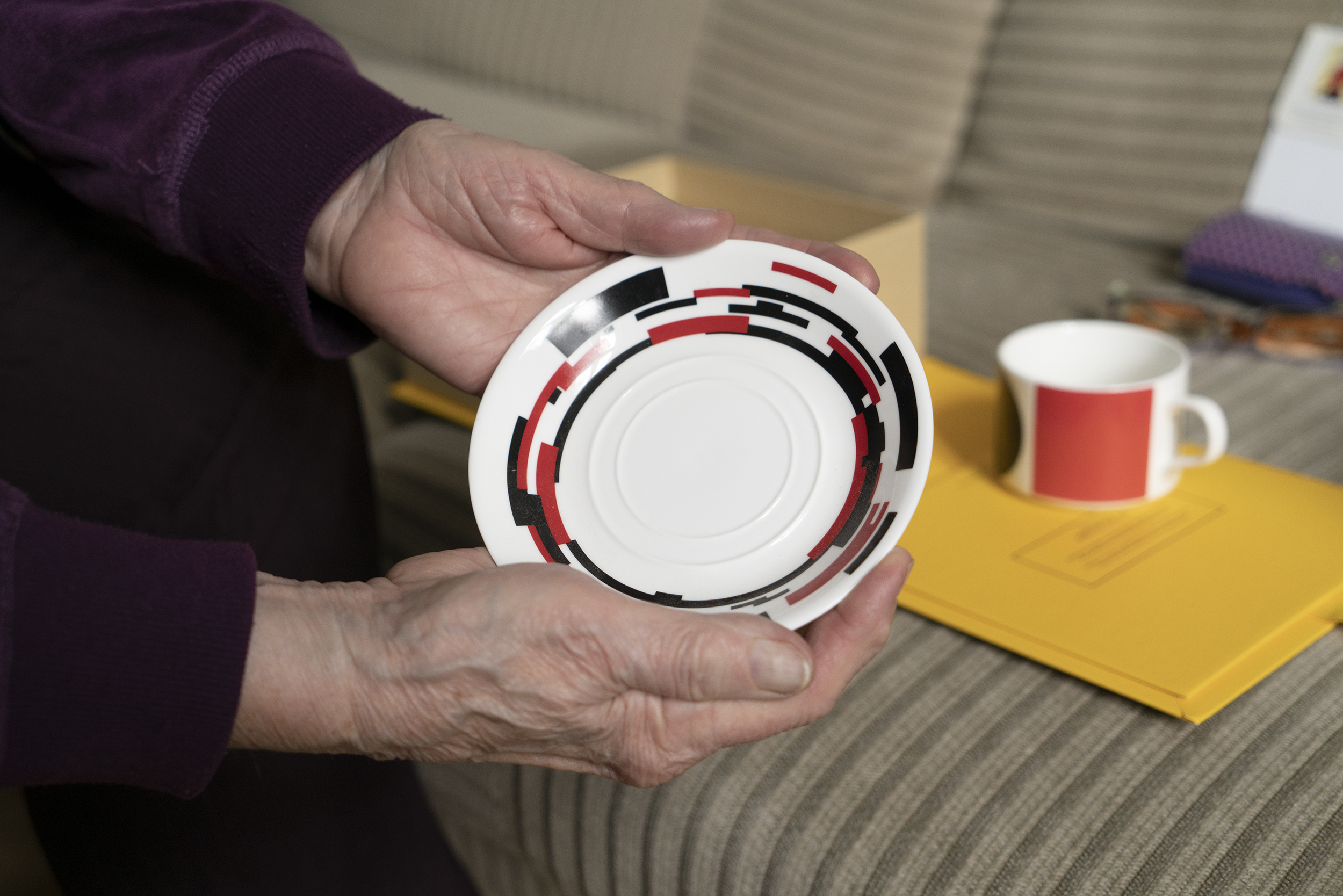
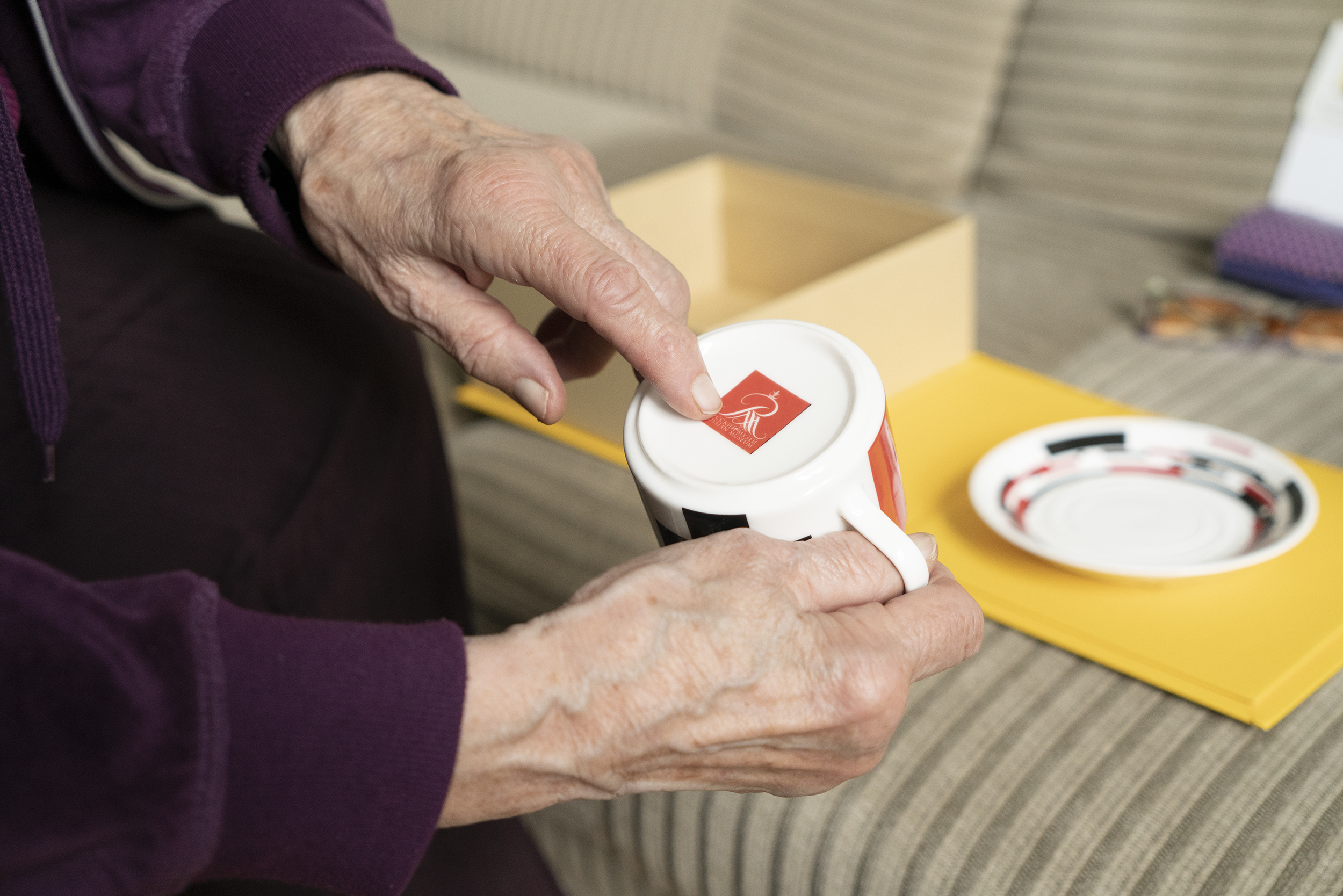 Shall we look into the mysterious box, the near thing you brought?
Shall we look into the mysterious box, the near thing you brought?
Let’s see. (Ľuba Belohradská pulls out of the yellow box a coffee cup and saucer with a geometric pattern). This mark is very important here, it’s an initial in Cyrillic: RM, which means “russkij muzei”, that is, Russian museum – the full name of that museum is “State Russian Museum”, which is based in St Petersburg, that is, in the former Leningrad.
The object was certainly produced in some limited series as a souvenir of the museum. It arrived in Slovakia just before 2015, and the owner was a friend of mine with whom I had been friends since childhood – actually since we were four years old. The cup was brought by her daughters, who were on a business trip in Russia, and since they are art lovers, they also visited the St. Petersburg museums, where it was waiting for them.
My friend, who has had health problems for a long time, in recent years preferred to meet at her apartment. And when I saw that this piece had been added to their family inventory, I immediately chose this cup. This is the cup that I beg to be served coffee from here. That wish was granted to me.
However, fate was unfavorable to my friend. Last year, in early May, we said our goodbyes, unfortunately without the physical possibility because it was Covid-19 and thus the number of people who could attend the funeral service was limited. And that year, I received a phone call from one of her daughters, who told me that she and her sister – taking into account our very long and intense friendship, and knowing that I used to drink coffee from this cup – had decided, as a remembrance of their mother, to pass this cup on to me.
In this cup your meetings, your moments together, are preserved.
Yes. Well, I’m at the point now where I don’t have the cup in the display case or in the kitchen anymore, but I’ve put it in the bookcase in my room, so that it’s in my line of sight when I get up in the morning, because it smiles at me. Every time I spin one of those Malevich symbols, which we can still tell each other later what it’s all about. At the same time, as if in the background, I have a photograph of her there, which I also received. That photograph shows her in the full bloom of youth. It is a truly beautiful memory. I am an albatross, and on my wings I carry you on the whistling winds of eternity. That’s such a remembrance, and here’s the name of a friend who passed away last year.
And this is how she is always in your presence.
Yes, but I don’t consider it a sentimental matter at all. Rather, it is an extension of the existence of the presence of the person with whom you have communicated for years, and now it has returned in the form of such a materialized memory.
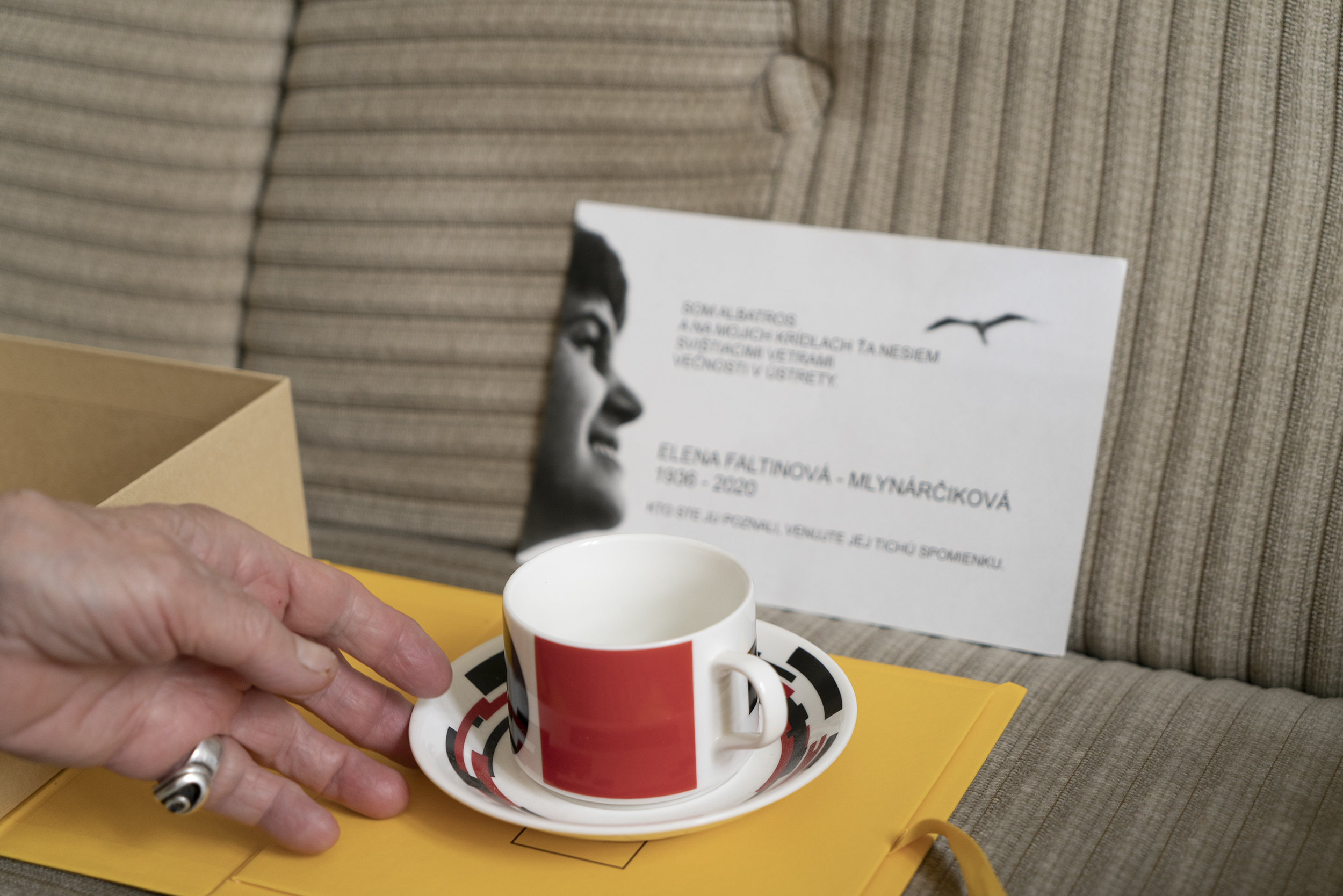 What is the story behind the design of this object?
What is the story behind the design of this object?
As far as the author of the design is concerned, he is an outstanding member of the Russian avant-garde of the early 20th century, Kazimir Malevich. He became important not only for the development of Russian art, but also for the development of the whole of Europe. This was because he was both an interesting practitioner, but he was equally important as a theoretician. He became a supporter of abstract art as well as the author of the Suprematist Manifesto, attributing the name Suprematism to abstract art, or its purest, most refined forms. And in doing so, he relied on the French, where the basic word – supréme – means the highest, the most perfect. He considered these abstract compositions to be the highest form of painterly reflection on the world, In particular, his famous painting The Red Square was created in 1915, and other basal shapes he operated with were: the black circle, the black square and the black cross. These symbols then also became very important for the new paths of graphic or typographic art. This is, of course, a very broad subject, and we could start talking here about the Italian Futurists and end up, for example, with Ľudovít Fulla, who brought the “plunging river” of these tendencies to Slovakia. It is a great enrichment of the artistic language within the first half of the twentieth century.
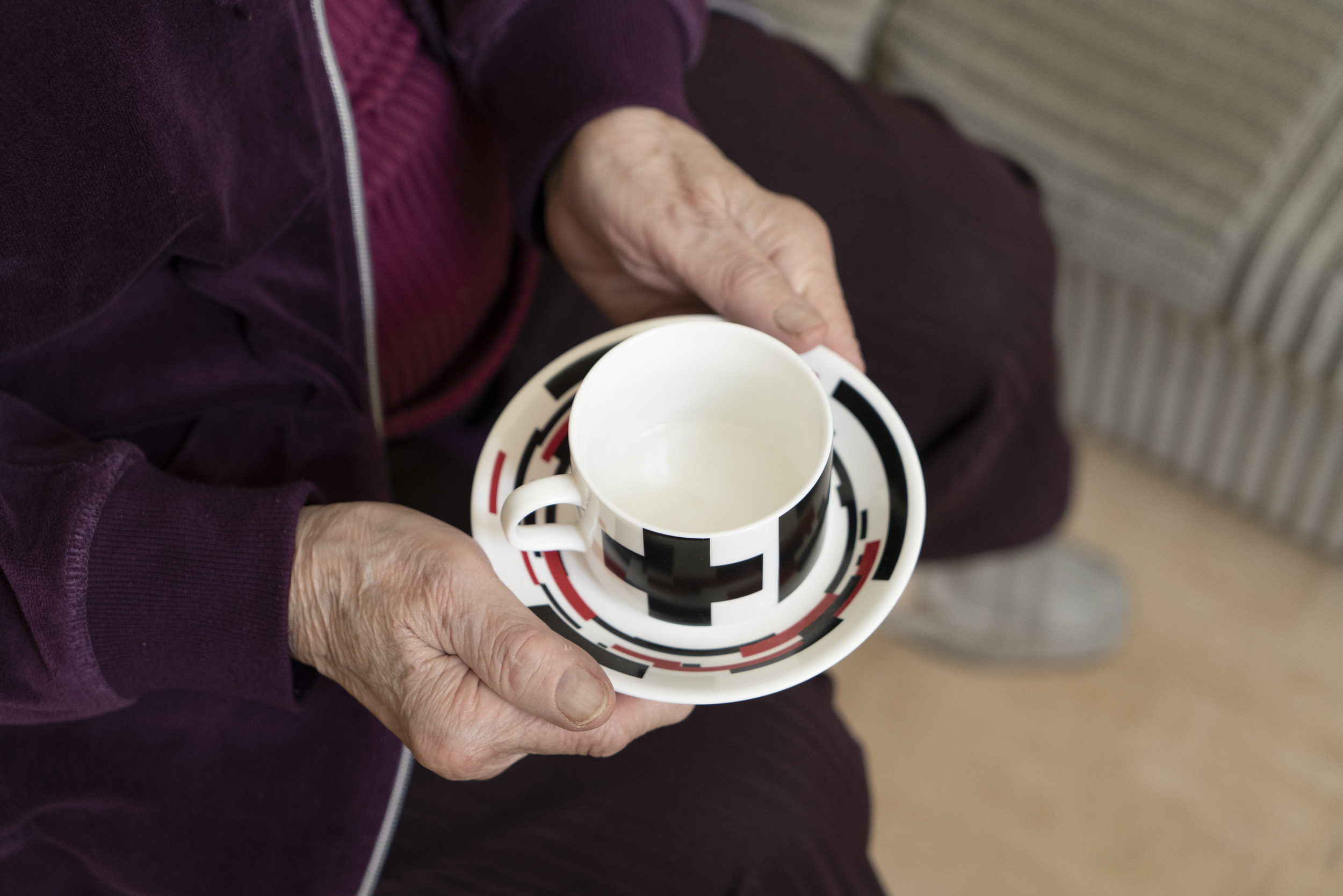
That cup is precious and important to me not only because of the memory of my particular friend, Elena, but also in terms of the development of 20th century art. I would say that I have a double pleasure and a double joy from it. And this is something that I cannot express in some kind of quotient, for example financial… It is simply “above” the thing. Above its real value. Because I visualize it all in that way, and it’s still very vivid for me.
And that the magic of Kazimir Malevich works so miraculously – this was evidenced by the exhibition on the Russian avant-garde that was held at the Albertina in Vienna a few years ago. A number of theoreticians from the aforementioned State Russian Museum took part in it, and at the same time there was a large catalogue for it, which I was leafing through before we met. For that exhibition and the catalogue, you could also get these, very nice, magnets in the gift shop. When you have read the text, you put them between the pages. And on them there is already Malevich’s stylization – in contrast to those pure geometric shapes, here again he comes to the figure. But I don’t think it was entirely a voluntary return. It came in the context of the fact that the political places in the Soviet Union in the late 1920s declared a crusade against the avant-garde, and there was a course that went in the direction of realism, which of course was exploited by all the academics and all those who were worried about their bread and butter. Malevich felt that pressure very strongly. And I don’t know whether he had worked it out internally or whether he decided to do it that way, but he came up with these depictions – whether it was a female worker, a kolkhoznik, or similar motifs, beautifully stylized in this kind of gently naive spirit. And I found these magnets in this gift shop, and I didn’t hold back and bought a few of them. This Malevich’s turn of phrase is also for me a kind of “crash course” in the fatality to which every artistic life is subject. For one can never tell in advance what the creative path of that particular individual will be. Whether he will persevere in his decisions, whether he will not be somehow diverted from his path or completely pushed into oblivion by the conditions of the time or by a dictate from the outside. Malevich is also an example for such a meditation on the fatality of the artistic profession.
He himself was born in Kiev in 1879, and as far as his ethnic origins are concerned, there are more Polish than Russian roots. He died prematurely in 1935. He was diagnosed with cancer, and there are documentary photographs of him lying at home, already in a more or less fatal situation, on his bed with his neck bandaged, with his mother and wife beside him. Such almost touching photographs of this great man, this artist, passing from the scene. And it was his funeral, and the funeral procession that went through the streets of Leningrad, that was symbolic, as members of the avant-garde walked right behind the coffin. They were aware that not only Malevich was dying, but also they were dying.
They made such a public spectacle of it as they marched demonstratively behind that coffin, which had this very square of Malevich’s, the symbol of his Suprematist “creed”, placed at its head. He was buried outside the public cemetery, in a spot in the countryside, which, however – due to various events – has fallen into oblivion. During Perestroika, a serious attempt was made to re-identify and revitalize the site. I don’t know the exact end of this story, but I know that there was such a movement. The Russian art magazines of the time followed it and commented on it. It’s a really sad story – such a great artist, who had such a wide radius of action, had to change direction and was forced into such an uncomfortable conversion.
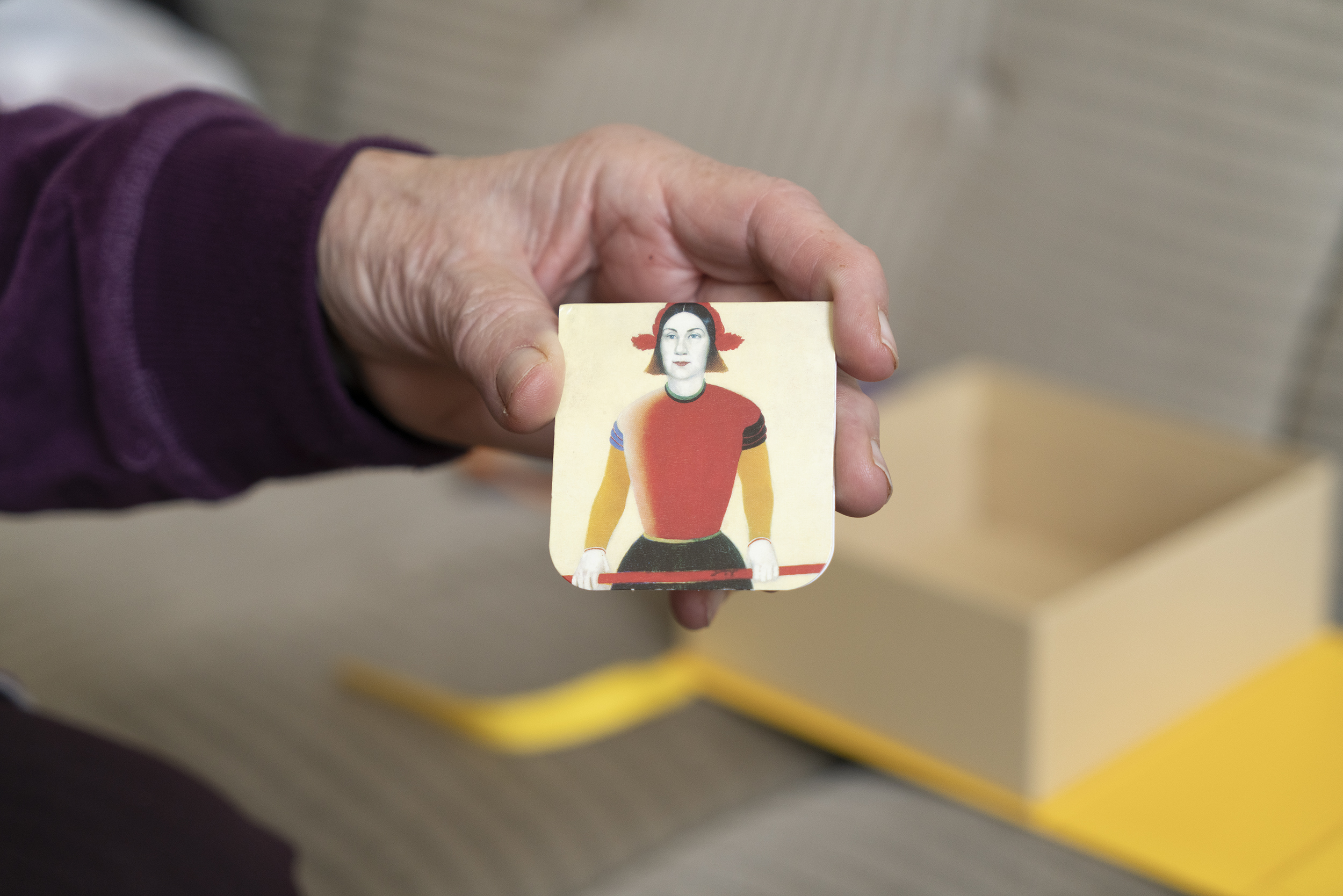 How do you view the moment when the work of such an important, even iconic artist becomes a utilitarian, everyday object? Do you see it as a good thing, because this way we can have a favorite artist near us, or is it more of a desecration when the work becomes a mass-produced product?
How do you view the moment when the work of such an important, even iconic artist becomes a utilitarian, everyday object? Do you see it as a good thing, because this way we can have a favorite artist near us, or is it more of a desecration when the work becomes a mass-produced product?
I would say what I said at the beginning, which is that it’s not quite mass production. It’s a commemorative object, and therefore a way to commemorate its creation. I, for example, bought a faience, flat bottle in Budapest sometime in the late 1970s, which is dated somewhere between the 18th and 19th centuries. It is beautifully decorated with a typical Haban glaze and has a tin cap on top. And it says on the bottom that it’s actually a replica, a replica of some particular artifact. That means it’s not a fake, but those museums are trying to get some of their very high quality collections out into the wider world.
I confess that I don’t know exactly whether Malevich himself made such a design or whether it’s an afterthought by the designers, because the saucer here is very interesting, which has a strange suprematist to futuristic pattern. It is known that the Italian Futurist theorist, the poet Marinetti, gave a lecture series on Futurism in Russia just before the First World War. And those local intellectuals and artists listened to him very attentively. So that development didn’t take place in isolation – even though there was no internet then, that artistic information was transmitted and flowed very strongly.
I would say that this situation in Russian territory after 1920 is very significantly influenced by the following fact: in the post-revolutionary euphoria, when it was not yet known that there would be gulags and various other extermination camps, there was such a spontaneous enthusiasm among the young and middle generation of avant-garde artists – they invented the idea of deliberately designing revolutionary symbols and emblems on porcelain. This is a historical fact. In 1990, I visited the Design Museum in Moscow, and there I experienced a special exhibition called Russian Revolutionary Porcelain. There were cups, plates, maybe even whole services, designed by people from the circle of these avant-garde artists, whether it was Malevich or Rodchenko or Tatlin, and others who are not so popularized here, but they worked just as well. And there you really see utilitarian objects made of porcelain on which they depicted the five-pointed star, the sickle and the hammer, or various revolutionary slogans, or texts. This is also unique in the world in terms of this kind of work. Although there were occasional editions, for example at the coronation of monarchs in Western Europe, where slogans such as ‘God save you’ appeared, so this function of porcelain, where it served a propaganda purpose, was not so exceptional. But here it was used for such a highly political actuality. It exists and it’s a highly prized collector’s item today.
Well, and this cup – it’s not a phenomenon for mass consumption. The tendencies of the time have always permeated the spheres of applied arts as well. But they had different modifications, they could take the form of something discounted, something sentimental. And now it occurs to me that Josef Čapek, a prominent Czech painter and later a journalist, co-editor of the Czech newspaper Lidové noviny, also published some theoretical reflections that today we would call minority or marginal genres. He was interested precisely in the field of marginal art, and I vaguely recall that in one of his reflections he also wrote about cups, which are used for the most consumptive cases, and which are kept in the kitchen cupboard. He wrote that these, too, are somehow a mirror of culture and are tied to a certain social stratum of the population. Cups that were sovereigns from religious pilgrimage sites often found themselves there. When simple people saved up to go on a pilgrimage to some miraculous place of pilgrimage, they would not only bring a rosary from there, but also a cup with an inscription. And if we go back to the 19th century, cups were very popular then – following the bourgeois culture of the spa resorts – and were used for popular drinking cures. This was a little flat cup, a cup that had a special handle, which could be sipped from during the walk. And on these cups there were always the names of the locality where that particular spa was, and maybe some sentences about “a healthy body and a healthy spirit”. Many museums at such spa sites are even built on collections of these drinking cups. Which is also an update that we would normally say – well, what the heck.
These are such specialized matters. Like, I was told by someone who was in Georgia that at feasts there they used to drink out of the horn of some animal that was poured into it, which was decorated with a silver rim. And this horn went round the table, and everybody drank from it, and it was not allowed to be put down unfinished, because the contents would spill out. It compelled that company to keep the object going round and round until it was drunk to the dregs.
And in this way the form encouraged the ritual.
Exactly.